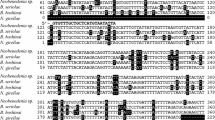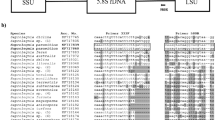Abstract
Francisella noatunensis orientalis is a bacterium that causes emerging bacteriosis in Nile tilapia (Oreochromis niloticus) in many parts of the world, including Brazil. It is a non-motile, Gram-negative, strictly aerobic, facultative intracellular coccobacillus. This species of bacteria is responsible for low to high mortality in fish farms, causing economic losses for fish farmers. This study aimed to detect the presence of F. noatunensis orientalis using qPCR (real-time polymerase chain reaction) and to describe lesions caused by the bacterium in O. niloticus in Brazilian aquaculture. For this purpose, 360 fish from six fish farms (30 per farm) were sampled at two time points (n = 180 per sampling). Necropsies and histopathology were performed for lesion observation, in addition to qPCR and sequencing for detection and identification of Francisella species. Environmental data were collected using a multiparameter sonde YSI EXO2. All measured limnological variables were within the optimum range for cultivation of Nile tilapia. The major lesions present were melanization of the skin, splenomegaly, granulomas, and inflammatory cell responses. The prevalence of francisellosis varied from 0 to 86.66% between time periods and fish farms analyzed, and an outbreak was observed during the second sampling period. This study describes the prevalence of francisellosis in O. niloticus and reports that the lesions found are not exclusively associated with this bacterial disease.




Similar content being viewed by others
References
Birkbeck TH, Feist SW, Verner-Jeffreys DW (2011) Francisella infections in fish and shellfish. J Fish Dis 34:173–187
Camus AC, Dill JA, McDermott AJ et al (2013) Francisella noatunensis subsp. orientalis infection in Indo-Pacific reef fish entering the United States through the ornamental fish trade. J Fish Dis 36:681–684
Chen SC, Tung MC, Chen SP et al (1994) Systematic granulomas caused by a rickettsia-like organism in Nile tilapia, Oreochronuis niloticus (L.), from southern Taiwan. J Fish Dis 17:591–599
Chern RS, Chao CB (1994) Outbreaks of a disease caused by rickettsia-like organism in cultured tilapias in Taiwan. Fish Pathol 29:61–71
Colquhoun DJ, Duodu S (2011) Francisella infections in farmed and wild aquatic organisms. Vet Res 42(1):1–15
Duodu S, Colquhoun D (2010) Monitoring the survival of fish-pathogenic Francisella in water microcosms. FEMS Microbial Ecol 74:534–541
Duodu S, Larsson P, Sjödin A et al (2012) The distribution of Francisella-like bacteria associated with coastal waters in Norway. Microbial. Ecol 64(2):370–377
Fukuda Y, Okamura A, Nishiyama M et al (2002) Granulomatosis of cultured three-line grunt Parapristipoma trilineatum caused by an intracellular bacterium. Fish Pathol 37:119–124
Hsieh CY, Tung MC, Tu C et al (2006) Enzootics of visceral granulomas associated with Francisella-like organism infection in tilapia (Oreochromis spp.) Aquaculture 254:129–138
Hsieh C, ZB W, Tung MC et al (2007) PCR and in situ hybridization for the detection and localization of a new pathogen Francisella-like bacterium (FLB) in ornamental cichlids. Dis Aquat Org 75:29–36
Jeffery KR, Stone D, Feist SW et al (2010) An outbreak of disease caused by Francisella sp. in Nile tilapia Oreochromis niloticus at a recirculation fish farm in the UK. Dis Aquat Org 91:161–165
Kamaishi T, Fukuda Y, Nishiyama M (2005) Identification and pathogenicity of intracellular Francisella bacterium in three-line grunt Parapristipoma trilineatum. Fish Pathol 4:67–71
Kamaishi T, Miwa S, Goto E et al (2010) Mass mortality of giant abalone Haliotis gigantea caused by a Francisella sp. bacterium. Dis Aquat Org 89:145–154
Leal CAG, Tavares GC, Figueiredo HCP (2014) Outbreaks and genetic diversity of Francisella noatunensis subsp orientalis isolated from farm-raised Nile tilapia (Oreochromis niloticus) in Brazil. Genet Mol Res 13(3):5704–5712
Mauel MJ, Miller DL, Styer E et al (2005) Occurrence of Piscirickettsiosis-like syndrome in tilapia in the continental United States. J Vet Diagn Investig 17:601–605
Mauel MJ, Soto E, Moralis JA (2007) A piscirickettsiosis-like syndrome in cultured Nile tilapia in Latin America with Francisella spp. as the pathogenic agent. J Aquat Anim Health 9:27–34
Noga EJ (2010) Fish diseases: diagnosis and treatment. Blackwell Publishing, Iowa
Nylund A, Ottem KF, Watanabe K et al (2006) Francisella sp. (Family Francisellaceae) causing mortality in Norwegian cod (Gadus morhua) farming. Arch Microbiol 185:383–392
Olsen AB, Mikalsen J, Rode M et al (2006) A novel systemic granulomatous inflammatory disease in farmed Atlantic cod, Gadus morhua L., associated with a bacterium belonging to the genus Francisella. J Fish Dis 29:307–311
Ostland VE, Stannard JA, Creek JJ et al (2006) Aquatic Francisella-like bacterium associated with mortality of intensively cultured hybrid striped bass Morone chrysops x M. saxatilis. Dis Aquat Org 72:135–145
Ottem KF, Nylund A, Karlsbakk E et al (2009) Elevation of Francisella philomiragia subsp. noatunensis Mikalsen et al. (2007) to Francisella noatunensis comb. nov. [syn. Francisella piscicida Ottem et al. (2008) syn. nov.] and characterization of Francisella noatunensis subsp. orientalis subsp. nov., two important fish pathogens. J Appl Microbiol 106:1231–1243
Soto E, Hawke JP, Fernandez D et al (2009) Francisella sp., an emerging pathogen of tilapia, Oreochromis niloticus (L.), in Costa Rica. J Fish Dis 32:713–722
Soto E, Bowles K, Fernandez D et al (2010) Development of a real-time PCR assay for identification and quantification of the fish pathogen Francisella noatunensis subsp. orientalis. Dis Aquat Org 89:199–207
Soto E, Baumgartner W, Wiles J et al (2011) Francisella asiatica as the causative agent of piscine francisellosis in cultured tilapia (Oreochromis sp.) in the United States. J Vet Diagn Investig 23:821–825
Soto E, Illanes O, Hilchie D et al (2012) Molecular and immunohistochemical diagnosis of Francisella noatunensis subsp. orientalis from formalin-fixed, paraffin-embedded tissues. J Vet Diagn Investig 24:840–845
Soto E, McGovern-Hopkins K, Klinger-Bowen R et al (2013) Prevalence of Francisella noatunensis subsp. orientalis in cultured tilapia on the island of Oahu, Hawaii. J Aquat Anim Health 25:104–109
Soto E, Primus AE, Pouder DB et al (2014) Identification of Francisella noatunensis in novel host species French grunt (Haemulon Flavolineatum) and Caesar grunt (Haemulon carbonarium). J Zoo Wildl Med 45(3):727–731
StatSoft, Inc (2011) STATISTICA (data analysis software system), version 10. http://www.statsoft.com. Cited 10 May 2016
Vojtech LN, Sanders GE, Conway C et al (2009) Host immune response and acute disease in a zebrafish model of Francisella pathogenesis. Infect Immun 77:914–925
Webster CD, Lim C (2006) Tilapia: biology, culture, and nutrition. CRC Press
Acknowledgements
The authors thank FAPESP for the financial support (2013/50504-5) and postdoctoral fellowships (2014/15859-0 to C.J. Francisco, 2014/13718-0 to M.V. Rodrigues, and 2015/13025-7 to M.F. Falcone-Dias). The authors also thank CNPq for the doctoral fellowship to R.J. da Silva of CNPq (307808/2014-9) and CNPq-PROTAX (440496/2015-2)/FAPESP 2016/50377-1.
Author information
Authors and Affiliations
Corresponding author
Ethics declarations
All procedures performed in studies involving animals were in accordance with the ethical standards of the institution or practice at which the studies were conducted.
Conflict of interest
The authors declare that they have no conflict of interests.
Rights and permissions
About this article
Cite this article
Rodrigues, M.V., Francisco, C.J., David, G.S. et al. Monitoring of Francisella noatunensis subsp. orientalis in farmed Nile tilapia (Oreochromis niloticus) in Brazil. Aquacult Int 26, 127–138 (2018). https://doi.org/10.1007/s10499-017-0204-4
Received:
Accepted:
Published:
Issue Date:
DOI: https://doi.org/10.1007/s10499-017-0204-4




